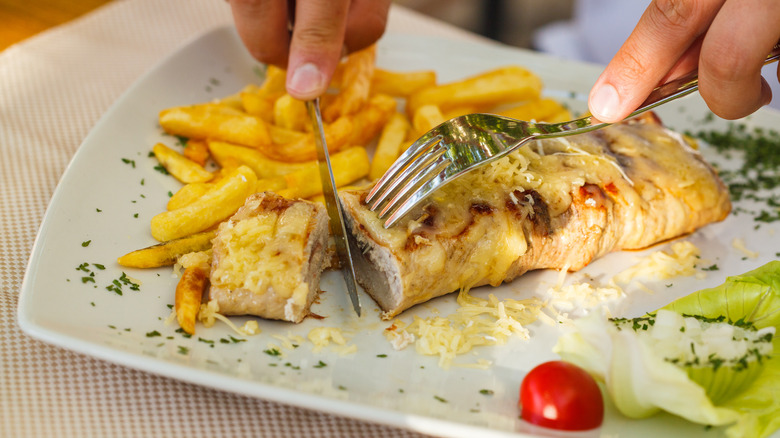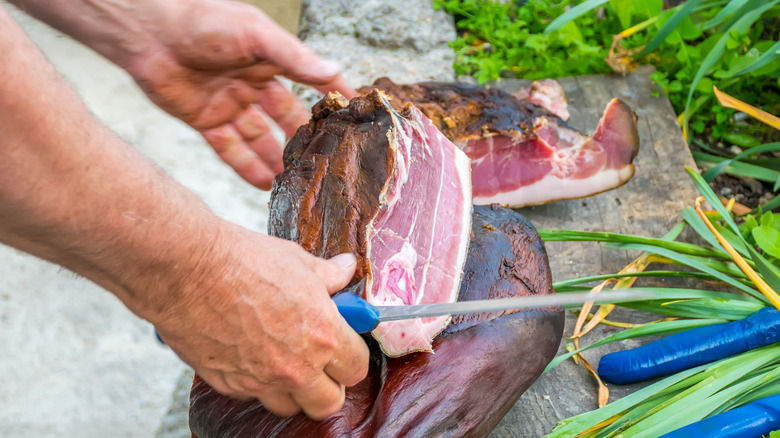How Njeguški Steak Became A Classic Dish In Montenegro
Firmly placed in the center of the rugged and coastal Balkan region is the small country of Montenegro. Its stunning Adriatic coastline and charming towns have been inviting tourists for decades, but what may be the most intriguing to a foreign visitor is the country's unique cuisine. While unknown to much of the world, their spicy, meaty, and cheesy palette is easy to get behind.
If you have knowledge of the Balkan region, you may be familiar with some of the classic dishes, such as ćevapi or burek. However, we think it's time to shed light on one of the lesser-known dishes, which has had an unassuming ascent to national fame in the country. Njeguški steak is now widely considered the national dish of Montenegro, and for good reason. The meaty delicacy is packed with all the indulgences you could want. A veal or pork schnitzel is used to make the steak, and it is stuffed with cheese and prosciutto from Njeguški, hence the namesake. Arguably, the tastiest ones include a hefty serving of local cream cheese, called kajmak on top, according to Culture Trip. Oh, and did we mention it can come breaded and fried? While we're convinced we have you salivating over that description, it may come as a surprise that this dish isn't actually that old. It was not thought up by ancient citizens, but rather by a famous Balkan chef.
The ascent of Montenegro's national dish
Milovan Mića Stojanović is the famous Serbian, not Montenegrin, chef credited for whipping up the first Njeguški steak. He was the private chef of famed Yugoslavian dictator Josip Broz Tito, and he was often tasked with cooking for the high-profile guests that came with the job, including numerous world leaders such as Queen Elizabeth II, Richard Nixon, and Indria Gandhi, according to Food Perestroika. The chef had a love for inventing his own original dishes and often named them after Serbian regions. The site mentions that during his career he invented over 100 unique dishes, which is an astonishing accomplishment, even for the most talented of chefs.
You may be thinking, why did Montenegrins cling to a dish that was named after a Serbian national hero, Petar II Petrović-Njegoš? Well, at the time the dish won the 1986 Culinary World Cup in Luxembourg, Montenegro was not yet an independent country. Food Perestroika notes that Montenegrins were "overwhelmed with pride" when the dish gained notoriety and started making it themselves.
However, today the dish can often be overlooked on restaurant menus in Montenegro without a trained eye. Some of this overshadowing comes from its similarity to other famous dishes. According to Nomad Paradise, it's very similar to another Serbian dish made of stuffed pork loin, called punjena vješalica. However, if you find yourself in Montenegro, you will know what to ask for when the menus are pulled out.

